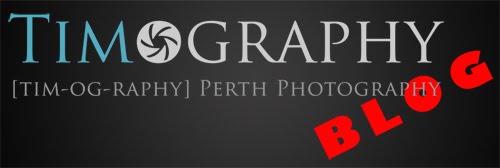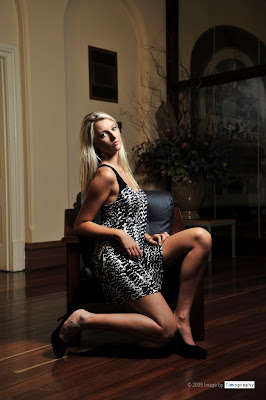
Well, I’m still here, just busier than the one legged man at the “you know what” kicking competition! It’s always funny, but as some of you know I keep a fairly close eye on my website stats. Its really encouraging to see the number of hits on my website steadily growing from one month to the next, and it continues to grow from one year to the next. That’s cool – and the number of clients that we book seems to grow in accordance with website visitors – makes sense huh. Well, every December for the last three years visits to the website drop dramatically but the number of bookings we take for the month are about triple for the rest of the year. Just though I’d share that…
So, while business is good I took the liberty of buying a few new goodies in the last couple of weeks. The first was a new Sigma 24-70mm f/2.8 HSM lens from B&H Photo in New York. The second is a pair of newly released remote TTL radio triggers from eBay. I’ll get to the triggers in a moment but firstly, the lens.

For those of you who do not know, my workhorse lens is a Sigma 24-70mm f/2.8D EX DG. These are a good value for money lens that offer reasonably good optical performance for a great price. In fact, at last count I have owned three of them. However this lens does have a downfall, and that is at wide open apertures it is known for being somewhat soft – it really doesn’t start to get sharp until about f/4+, which kinda defeats the purpose of having a constant f2.8 aperture through it’s focal length.
Enter stage left the newly (well, it’s kinda new…) released HSM version of this lens. In fact, its full name is a Sigma 24-70mm f/2.8 IF EX ED HSM. What do all the acronyms stand for? Well, the important ones are IF [Internal Focussing] which means to ensure stability in focusing, this lens moves the inner lens groups without changing the lens' physical length; and HSM [Hyper Sonic Motor] which means this lens uses a motor driven by ultrasonic waves to provide a quiet, high-speed Auto Focus. It’s also almost a full 100g heavier than its older brother and weighs in at about 800g. That means there's a lot of glass hiding in there...
Optically speaking – this new lens is a cracker. You can read a really good review written by someone who actually knows what they’re talking about here. Suffice to say when it comes to the optical performance of this lens, it is only marginally pipped by the awesome Nikon AF-S 24-70mm f/2.8G ED (which costs $1000 more) but the Sigma totally out performs the Canon EF 24-70mm f/2.8L USM which costs $500 more. Cool.
So what does all this mean? Well the comparison image above shows a pretty good example of what I am talking about. The two images were taken showing the somewhat grotty keypad from my fax machine, and they both show a portion of the middle of the image enlarged to 100%. For both of the images I was using the [V] on the keypad as the focus point. Both were taken using a Fujifilm S5 Pro D-SLR body set to manual mode. Both shots were taken at 70mm, f/2.8 @ 1/2 second shutter speed, ISO 100. There really is no comparison as you can see, the image at the top (the new lens) is sooo much better at f/2.8.
Why is this so important you ask? Well I like to do a lot of portraits at larger apertures and now it means I can go all the way out to f/2.8 and not worry about sharpness issues. I was also having problems at weddings with the old lens. This is because in the reception I like to keep the aperture around f/3.2, which at ISO 800 gives a nice bright exposure when coupled with my SB-900 bouncing light off the roof. However the images were still a tad too soft for my liking, with some images coming out looking like they were not focussed properly; but is was just the lens performing badly.
I shot my first wedding yesterday with this lens and I have to say; although I have just had a preliminary glance at the images, it was great. I think I am going to like this lens even more than its older brother…

And finally, I bought myself a couple of new triggers. In a previous blog post I gave a demonstration of the very reliable Bowens Pulsar triggers. These things are great and work without skipping a beat, and I have never been in a situation where I have gone out of radio range with them. But they are not an intelligent trigger. Let me qualify that – they are only good for triggering a device by sending a trigger pulse to what ever is plugged into the receiver at the other end. There is not a lot of mathematics involved in this process and it means that you have to set your camera and your flash unit both to manual mode. Now, when you have lots of time this is not an issue. But it does mean that you have to unpack your light meter, get a reading of the ambient light in the scene, set your flash to [x] power level, take a meter reading of the flash to see how it compares to the ambient light reading, repeat the process again once you have adjusted the flash output, and keep repeating this process until all is good according to your light meter and you have figured out in your head how much brighter (to make it the key light) or softer (to make it a fill light) the flash output needs to be in balance with the ambient light. This is of course time consuming but it works really well at giving you a constant exposure, shot to shot, as nothing is changing that is going to affect your exposure. The time issue is a big one however, especially on a wedding shoot where you HAVE to make it happen there and then, with the minimum of fuss as the bride has given you a list of 100 places they want to have their photos taken in that short space of time between the wedding ceremony and the reception.
So because of this, I usually leave my Bowens triggers at home and either use a reflector, simple (dare I say it) on camera flash, or if I can find some shade somewhere I’ll use the Nikon i-TTL system. i-TTL is brilliant. It allows you to get a full metered; i.e. automatic flash output to obtain optimum flash exposure, while using the flash wirelessly off-camera. It is instantaneous, requires no calculations or manual adjustments on your behalf and will give you a perfect exposure, well; the greater majority - about 95% - of the time. But under normal circumstances the flash on your camera (master) and the off camera flash (remote) have to be in line of sight, and have to be fairly close together so that the infra-red signal communicating between the two flashes can be seen by the units. This is virtually impossible in bright daylight unless you are within a few feet of the remote flash – which kinda defeats the purpose of having off camera flash to begin with. As I said earlier, the only other option is to go indoors or find some shade somewhere.
Enter the TTL flash triggers. I have been waiting a long time for PocketWizard to come out with their i-TTL triggers for Nikon, and there is still no light at the end of the tunnel. So, I took a bit of a gamble and bought these triggers. They have been causing a bit of a stir on some of the biggest camera/lighting blogs around the world. They apparently work really well in TTL mode (single flash unit) but I have not yet seen any results of how they will work in i-TTL mode. i-TTL gives you the ability to have more than one flash unit contribute to the exposure and also assign different flash units different power levels and even have different groups of flashes all operating at once. Very Cool.
I have yet to receive them but I am hoping they will be the answer to my problems. I will certainly let you know on the next blog post how they work and exactly how reliable they are, but initial googling have found some, albeit sketchy; encouraging results. Time will tell! I also intend to produce a video or two on how to use i-TTL to wirelessly trigger your flashes, sorry Canon guys you will have to look elsewhere for now, but I may be able to wrangle something in the near future.
Ok, I’m outta here, I’ll let you all know about the new TTL triggers (fingers crossed they work!) and I’ll catch you all soon!





























